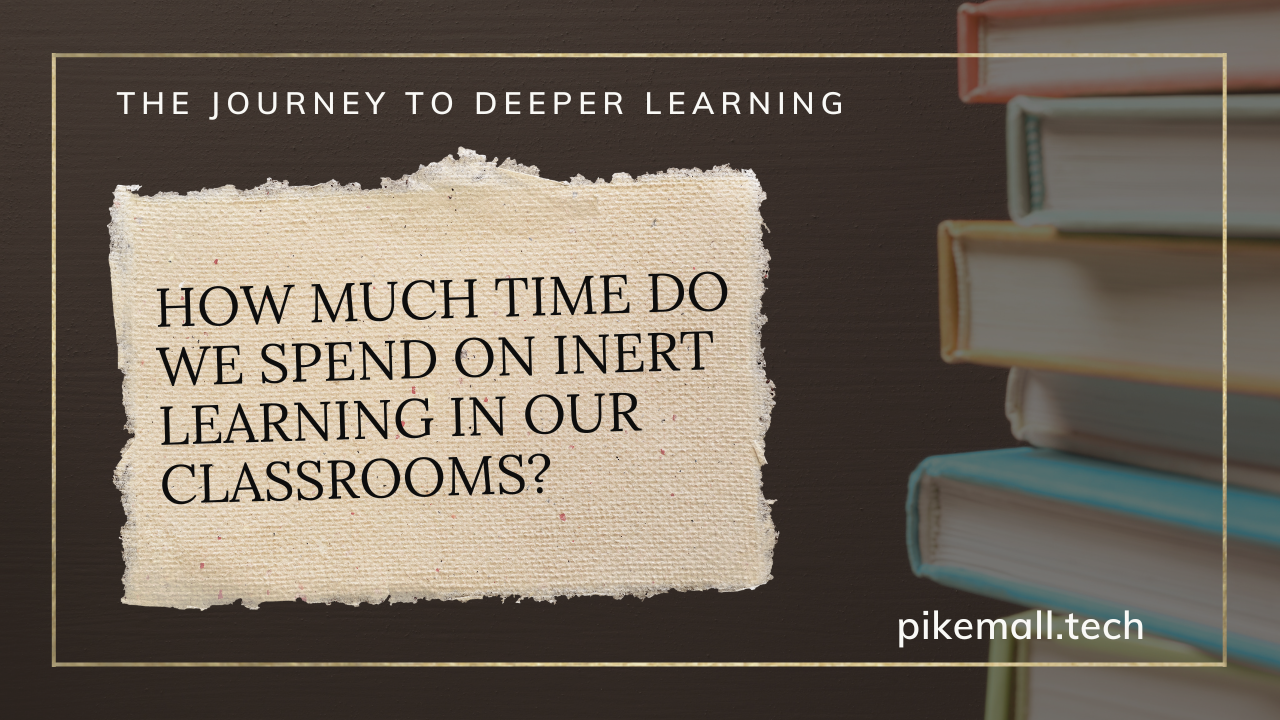While we can blame the COVID-19 pandemic on many things, we can’t blame it for the “digital divide” among students across the United States. That divide was in place long before anyone had ever heard of COVID-19.
However, the pandemic did shed more light on the inequities of digital access across the country.
Three primary obstacles faced by students from lower-income households when trying to complete digital homework during the pandemic:
- Had to complete work on a cell phone
- Had no computer access at home
- Had to use public wifi to complete work
These obstacles disproportionately affected lower-income families and Black teens. Even before the COVID-19 pandemic, Black teens faced these same issues. In fact, they were more likely to have no home computer access than any other group.
But what does the digital divide look like across the US? When we talk about the digital divide, how do we define it? What areas do we need to address to close the gap? And what do we have control over at the local, state, and national levels to initiate change?
Equitable Internet Access at Home
First, let’s take a look at internet access at home. While you may think you have great internet speeds, I can promise that you likely don’t when compared to other countries. And the number of people in the US with internet speeds slower than the FCC minimum is disturbing.
For now, let’s embrace the fact that 27% of adults in households earning less than $30k/year access the web only through smartphones. No cable internet, no fiber, no DSL. Just whatever they can get through their smartphone or hotspot.
And it’s not just adults. One in five children also lives in these households. That number is even higher for Black and Hispanic kids.
What does this mean for digital equity and equal access to education? It means that a lot of students are starting at a disadvantage. They’re trying to do their homework on a phone, with patchy service and no guarantee of privacy or quiet.
They may not have reliable transportation to get to a library or other public wifi hotspot. And they certainly can’t afford to pay for data overages each month.
This digital divide has serious consequences for students from lower-income families. They have less access to the internet and are less likely to have a computer at home. This means they have fewer opportunities to do homework, research projects, and develop 21st-century skills.
How do we think about designing instruction when we know that over a quarter of students in low-income homes will either do their work on a smartphone or connect to the internet through a smartphone hotspot?
When we think about equal access, it’s important to consider the digital divide and how students from low-income families have less access to connected technologies. This impacts their ability to do any homework assigned on a computer or participate in remote learning if needed.
Issuing school devices is helpful and needed for many families but is not the final step in ensuring equitable access. Planning for the type of access students have at home is a prime consideration when designing technology-infused instructional activities. Even if they have a school-issued device, they may not have a stable, high-quality internet connection.
I live and teach in Kentucky; a state with very urban and very, very rural areas. I know plenty of my teacher friends who have difficulty accessing high-quality high-speed internet access from their homes simply because of where they live.
Yes, if you live in a large city like Louisville or Lexington, you have the opportunity to access decent internet speeds. But, if you live a few miles outside of town, your choices quickly disappear.
It’s not just about location here in Kentucky. Kentucky claims three of the top ten counties in the US with the lowest median family income as of 2020; Owsley County at $25,997 (number 2 on the list), Clay County at $28,886, and Bell County at $30,202. The median household income for the United States was $67,340 in 2020.
How much do you think a family making $25k a year will spend on internet access? I feel certain it’s not a high priority.
We must provide better internet access to more people. At this point in our country, it’s a moral imperative. Children and adults who don’t have equitable access to the internet are at a disadvantage. It’s time to treat internet access like a utility.
Equitable Access to Devices
Currently, Chromebooks rule the world of student devices. Somewhere around 60% of student devices are Chromebooks. No device has become so associated with education more quickly than the Chromebook.
During the first year of the COVID-19 pandemic, some 30 million Chromebooks found their way to the hands of students, ready to use them for various learning needs.
The reasons for this are many and varied, but the most important factor is price. A Chromebook can be had for as little as $149. That’s a price point that schools can afford. It’s also a price point that families can afford. The tight integration with Chromebooks and Google’s Workspace for Education tools makes purchasing a Chromebook the perfect choice for many schools.
Chromebooks have been a game changer regarding student access to technology. But equal access is only the beginning. The real challenge is using these devices to create student-centered learning experiences. And that’s where we have fallen short.
When traditional learning was disrupted by the pandemic, many teachers didn’t change how they taught, even though the learning environment looked nothing like the traditional American classroom. Students were forced to sit in Zoom meetings for hours and were flooded with work as teachers tried to keep them engaged in learning. Meanwhile, parents struggled to help their learners, and everyone realized that simply giving a student a device did not equal instantaneous learning.
And let’s remember the all-important internet access issue. Just because we gave students a device didn’t mean they could use it. It certainly didn’t mean that their home internet connection could support five children on video calls at the same time.
And parents were given little to no support or time to help their children use the devices they’d just been handed. How were they supposed to know how to set up Zoom, Google Classroom, or any other tools their child’s teacher used? It was all very overwhelming.
Acknowledging what we didn’t do well during the pandemic gives us a chance to change how we do things in our classrooms right now. Not because we are trying to prepare for another pandemic but because we realize that what we were doing before the pandemic wasn’t working. And it hadn’t been working for a long, long time.
The Shift to Student-Centered Learning
We’re beginning to tackle the digital divide with school-issued devices. While we’re not buying as many as we did during the pandemic, our schools are forever changed concerning student access to technology.
We need to keep pushing for better internet access for everyone. While we can’t do much at our schools, we can take up the cause in our communities and work with companies and our local, state, and federal governments to make quality internet access affordable and accessible for everyone.
The next mountain we have to climb is rethinking what we do in our classrooms daily. We can’t exist by focusing on inert learning because we live in an age where most students now have the access and the device to learn any bit of information or knowledge we might have shared.
Our focus must shift to creating deeper learning experiences for our students, focusing on authentic work and student choice. The days of the teacher being the arbiter of all knowledge are over. We must now be the facilitators of learning and provide our students with experiences they can take with them long after leaving our classrooms.
To close the digital divide, equal access to technology is necessary, but that’s only the beginning. Schools must shift their focus to student-centered learning for students to truly benefit from using connected technologies. Too often, teachers try to keep teaching in a traditional way even though the environment has changed, which isn’t effective. Student-centered learning allows for more creativity and deeper engagement with the material.
Our students frequently obtain only a superficial level of understanding that fails to equip them for more complex problems in school and beyond. Rethinking our lesson design with tools like the 4 Shifts protocol can allow every teacher to make small changes that can benefit students.
When we make the shift to student-centered learning, we provide our students with opportunities to think critically, solve problems, and create something new. All these can lead our students to deeper learning that will last a lifetime. And when we integrate technology into our lessons in meaningful ways, we help close the digital divide for good.
Infrastructure, devices, and content are three primary ways to bridge the digital divide. Infrastructure includes ensuring that all students have access to high-speed internet at home. Devices include providing students with a laptop or tablet they can use for schoolwork. And content includes creating digital resources that are accessible to all students, regardless of income level.
Lastly, we must help our teachers prepare for this new world of deeper learning supported by technology. We need instructional coaches and technology coaches to work with teachers in the field to provide ongoing, job-embedded, and content-aligned professional development.
The digital divide won’t close overnight, but we can make strides by focusing on equal access to technology, student-centered learning, and quality professional development for teachers. It’s time for us to take up the challenge and provide all students with the resources they need to succeed in school and in life.
If you’re looking for more ways to move away from inert learning and toward deeper learning in your classroom, be sure to sign up for my free newsletter. I’ll update you weekly on the latest deeper learning strategies supported by technology integration. I’ll also include links to helpful resources and provide tips for making the most of your teaching time.

![Blade Itself (08) by Abercrombie, Joe [Paperback (2007)]](https://m.media-amazon.com/images/I/21OlYp3JSDL._SL160_.jpg)











